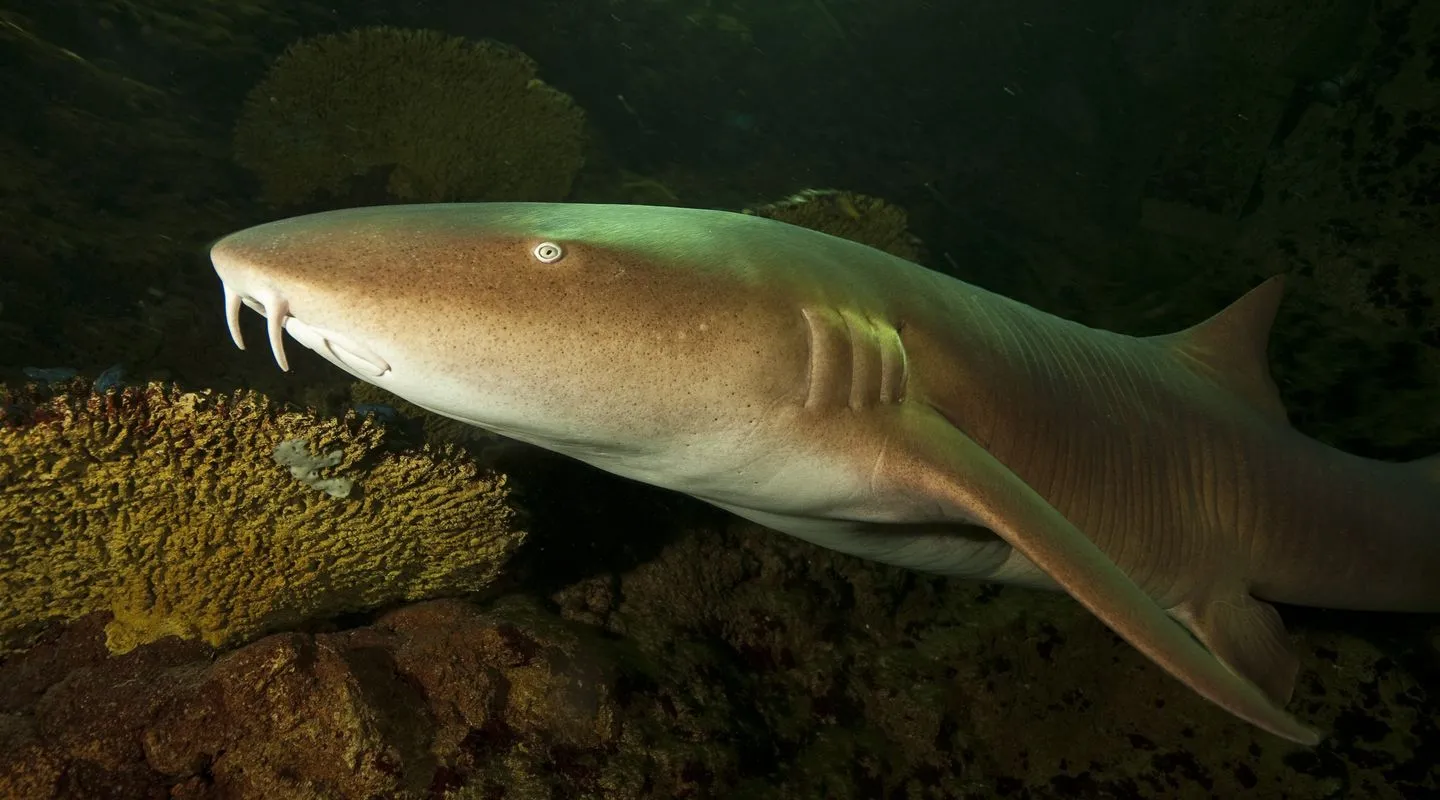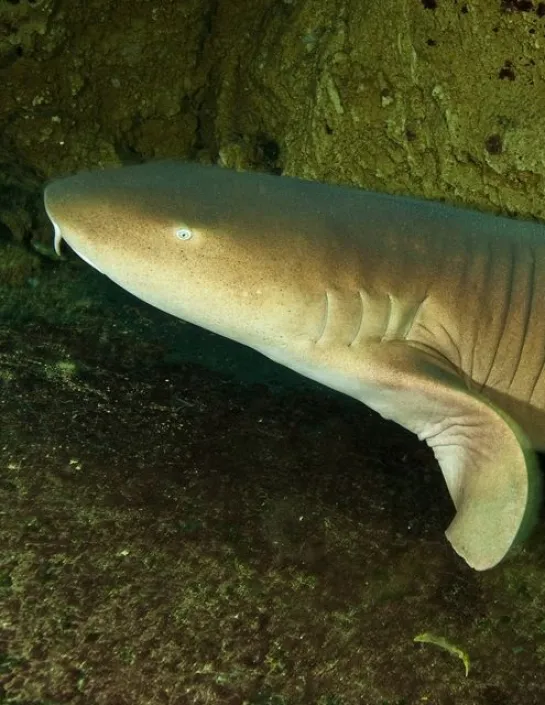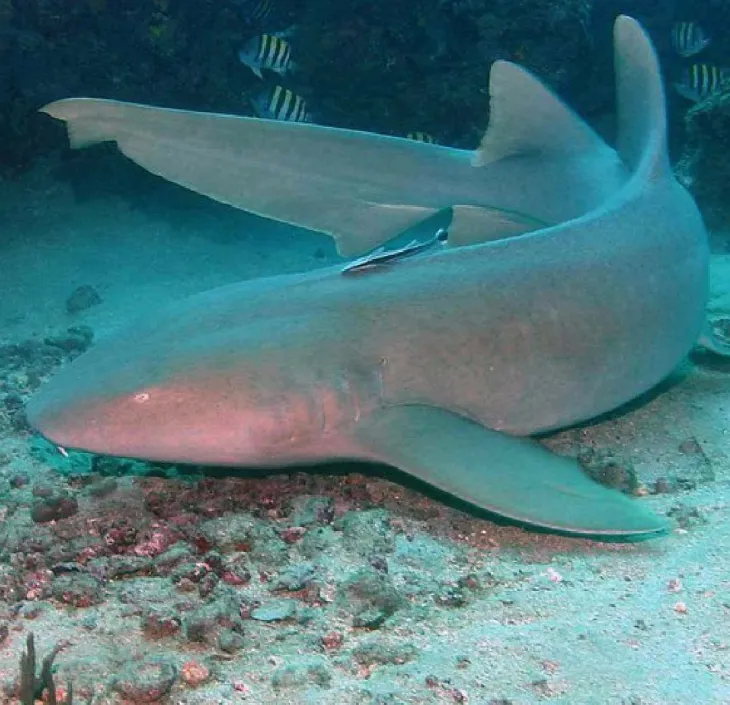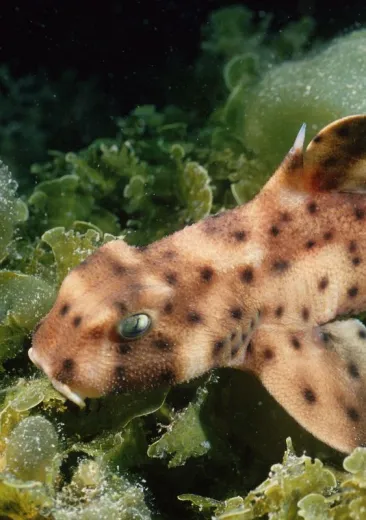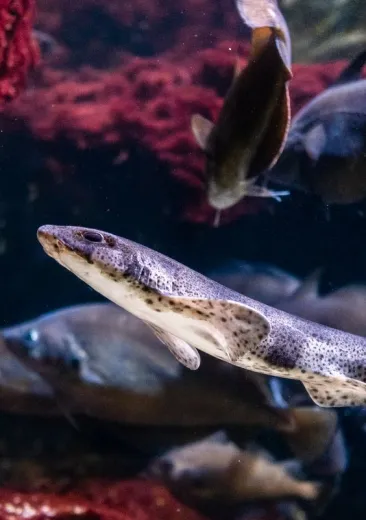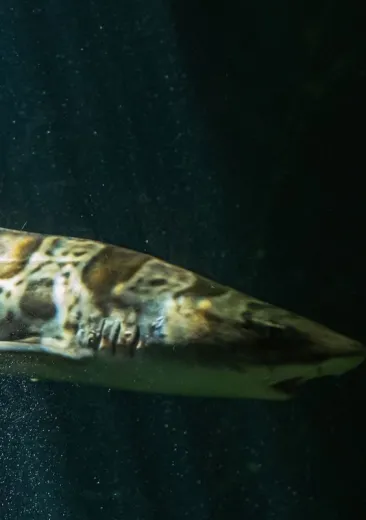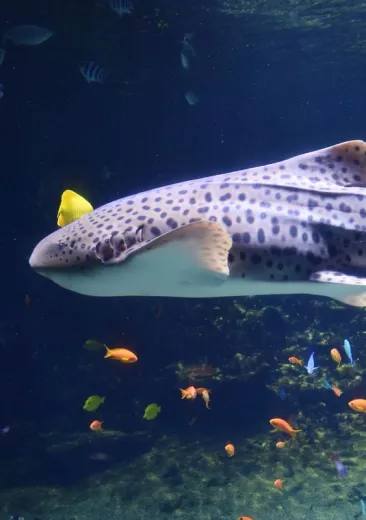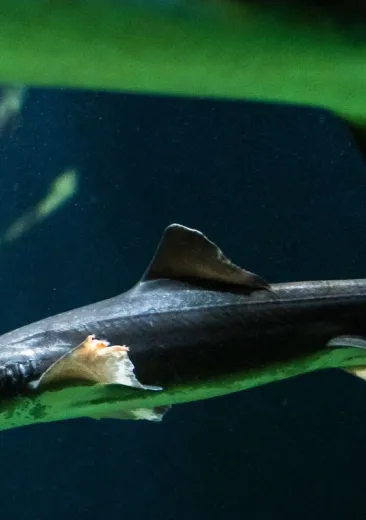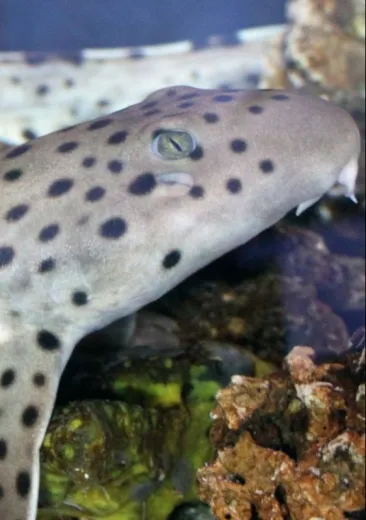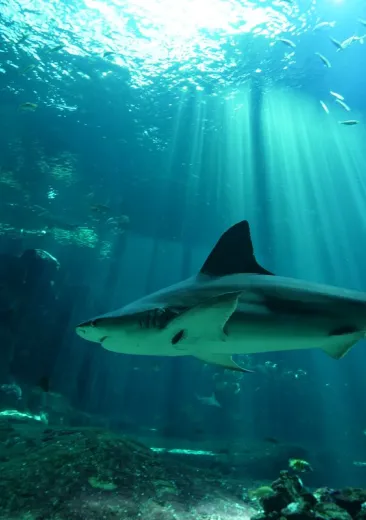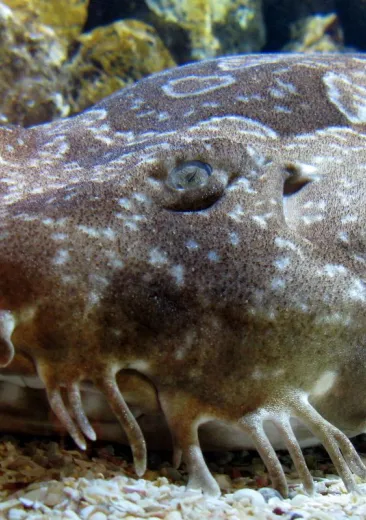Where is the animal to be found?
It lives on the seabed and in shallow coastal waters, from the intertidal zone down to 130 metres.
How can it be recognised?
It can be recognised by its flat head and small eyes. It can grow to 4.5 metres.
What is distinctive about it?
This species is ovoviviparous. Once the eggs have hatched, around 30 juveniles will be expelled from the female’s body once they have grown to around 30 centimetres.
Threat and protective measure
VU - vulnerable and in decline. It is covered by certain management measures in the United States (in the Gulf of Mexico), whereas in South America, the Colombian government is considering banning it from being fished in order to protect its marine biodiversity.
Its population is globally considered to be declining. It has a large habitat area and legislation for its conservation in Belize.
This species is suspected to have suffered a decline in population of 30-49% over the last three generations (90 years) due to actual and potential harvesting levels as well as habitat loss and degradation.
The Atlantic nurse shark is part of a MON-P, or monitoring program in which Nausicaa is involved. It is a European conservation programme that monitors the populations of animals in institutions that are members of EAZA, the European Association of Zoos and Aquariums.
